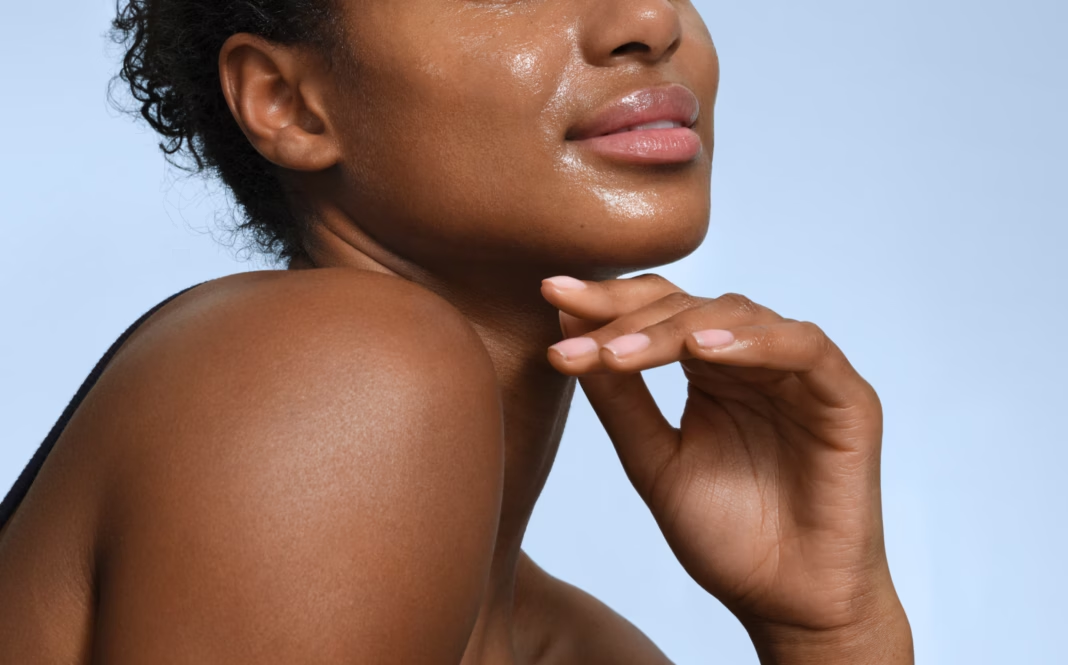Dry, irritated, or dehydrated skin can be difficult to manage—especially if your skincare routine includes active ingredients or harsh environmental exposure. One simple yet highly effective method for restoring your skin’s moisture barrier is face slugging.
Originating from Korean beauty practices, slugging has recently gained popularity across the skincare world for its ability to lock in moisture, repair the skin barrier, and deliver visibly plumper, smoother skin overnight.
In this article, we’ll break down how to do face slugging step by step, what products to use, and how to integrate it into your current routine—even if you’re following trends like skin cycling.
What Is Face Slugging?
Face slugging is a skincare method that involves applying an occlusive layer—usually a petroleum-based product—over your nighttime skincare to seal in hydration and active ingredients. The term “slugging” refers to the glossy, ‘slug-like’ appearance your face takes on once the occlusive layer is applied.
This technique is especially useful for:
- Dry or dehydrated skin
- Compromised skin barriers
- Sensitive skin
- Harsh climates (cold, dry, or windy)
It’s not about adding more products, but sealing in what you’ve already applied to prevent water loss during the night.
Benefits of Face Slugging
- Locks in moisture: Prevents trans-epidermal water loss (TEWL) overnight
- Boosts hydration: Especially helpful after using serums and humectants like hyaluronic acid
- Strengthens the skin barrier: Ideal for skin that feels tight, flaky, or irritated
- Enhances product absorption: Helps your actives work more effectively
- Improves skin texture: Wake up with softer, more supple skin
Step-by-Step Guide: How to Do Face Slugging
Here’s a clear, detailed guide to help you slug safely and effectively:
Step 1: Cleanse Your Face Thoroughly
Start with a gentle, non-stripping cleanser to remove dirt, oil, makeup, and sunscreen.
- Use lukewarm water
- Pat your face dry with a soft towel
- Avoid cleansers with exfoliating acids before slugging
Pro Tip: Double cleanse if you wear makeup or heavy sunscreen.
Step 2: Apply Your Regular Nighttime Skincare
This is where your usual serums and treatments come in. Good options include:
- Hyaluronic acid for hydration
- Niacinamide for calming and brightening
- Peptides to support skin repair
- Ceramides to rebuild the skin barrier
Important: Avoid using retinoids or exfoliating acids (AHAs/BHAs) directly before slugging unless advised by a dermatologist, as occlusion can increase their potency and irritation.
Step 3: Seal It All in with an Occlusive
Now comes the key part of slugging: applying a thick layer of an occlusive product.
Popular occlusives for slugging:
- Petroleum jelly (e.g., Vaseline)
- White petrolatum-based ointments (e.g., Aquaphor)
- Non-comedogenic balms or ointments with minimal ingredients
Apply a thin, even layer over your entire face. You don’t need to slather it on thickly—just enough to get a light sheen across your skin.
Step 4: Sleep and Let It Work Overnight
Go to bed and let the occlusive do its job. Overnight, your skin will absorb and retain moisture, enhancing repair and elasticity.
To prevent product transfer:
- Use a silk or satin pillowcase
- Keep your hair tied back
- Optional: Lay a towel on your pillow
Step 5: Wash Off in the Morning
In the morning, cleanse your face gently to remove the occlusive layer and any residue. Follow with your usual AM routine, including moisturizer and sunscreen.
How Often Should You Do Face Slugging?
| Skin Type | Slugging Frequency |
|---|---|
| Dry or Dehydrated | 2–3 times a week |
| Sensitive or Compromised | 1–2 times a week |
| Oily or Acne-Prone | Occasionally, with caution |
| Normal or Combination | 1–2 times per week |
If you notice breakouts or congestion, reduce frequency or choose a non-comedogenic alternative to petroleum jelly.
Face Slugging and Other Routines: Can You Combine?
Yes, you can combine slugging with other skincare methods—but you must be strategic.
For example, if you’re following a trend like skin cycling, which involves rotating between exfoliants, retinoids, and recovery nights, slugging can enhance the recovery nights by offering intense moisture and barrier support.
This pairing is especially helpful if you’re wondering “What Is Skin Cycling and How Does It Work?” Skin cycling schedules rest days after using potent actives—making it the perfect time to incorporate slugging to maximize hydration without interfering with stronger ingredients.
Tips for Safe and Effective Slugging
- Always apply on clean skin. Dirt or makeup trapped under occlusives can lead to clogged pores.
- Choose products with minimal ingredients. Avoid fragrances, essential oils, or unnecessary additives under your slugging layer.
- Don’t slug every night. Give your skin time to breathe unless you have extremely dry skin.
- Spot slugging works too. Target dry areas like under eyes, lips, or cheeks without applying to the entire face.
Who Should Avoid Face Slugging?
Slugging is not ideal for everyone. You may want to skip or modify the technique if you:
- Have acne-prone or very oily skin
- Are using prescription-strength retinoids
- Have open wounds or inflamed breakouts
- Live in a high-humidity environment (which may cause occlusive products to feel heavy)
Final Thoughts
Face slugging is a simple, affordable, and effective technique that can dramatically improve hydration and support skin recovery. When done correctly, it strengthens your skin barrier, softens texture, and helps other products work better.
Whether you’re dealing with winter dryness, over-exfoliation, or simply want a glow boost, incorporating slugging into your nighttime routine—especially on rest days if you’re exploring routines like What Is Skin Cycling and How Does It Work?—can make a noticeable difference in how your skin looks and feels.


